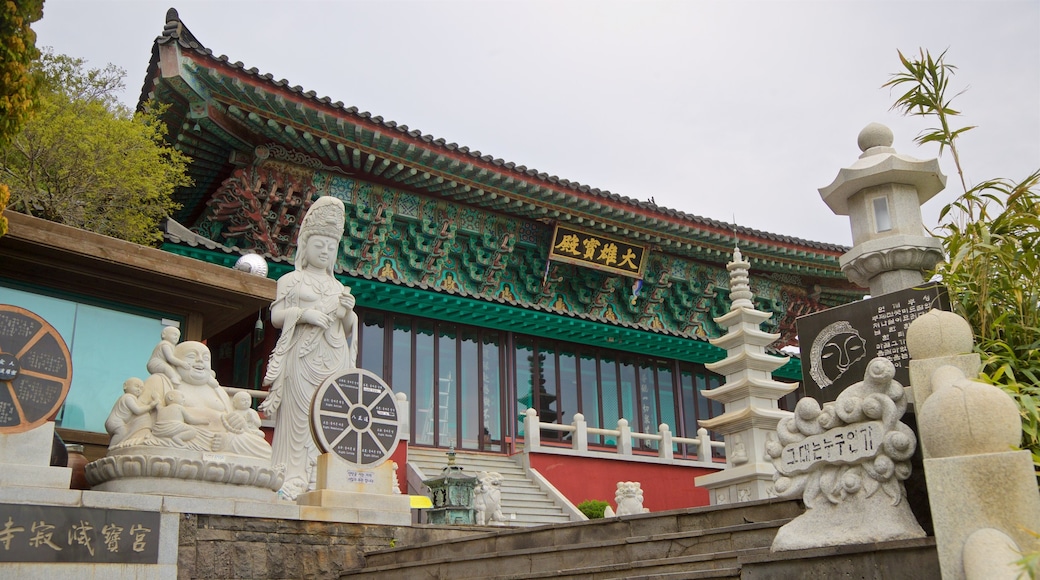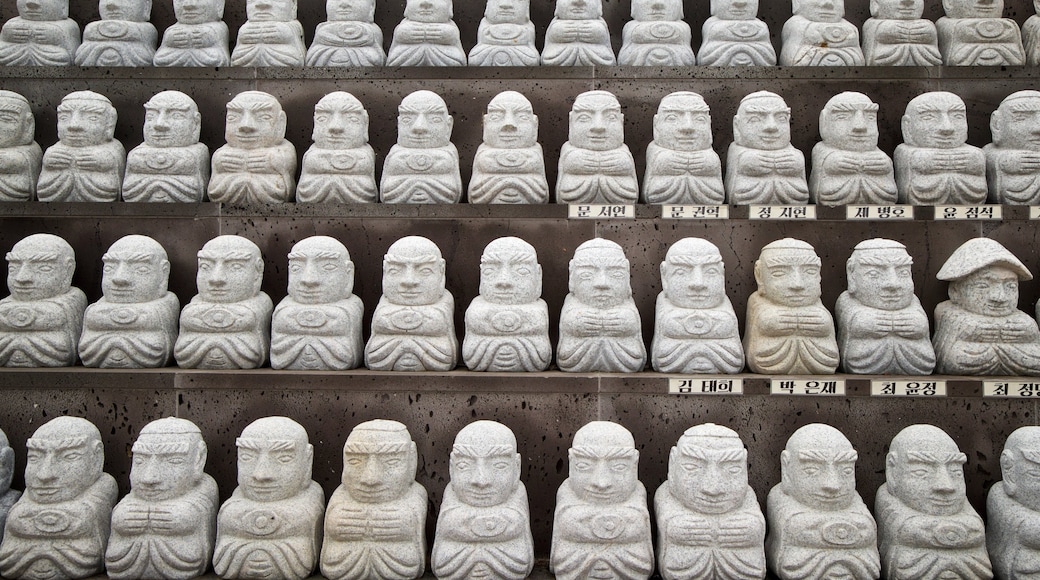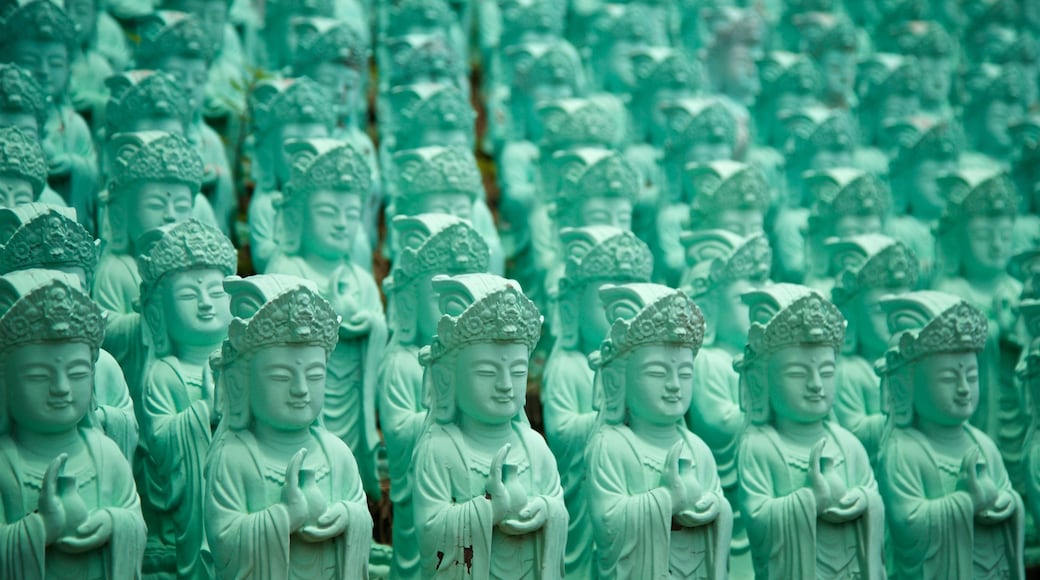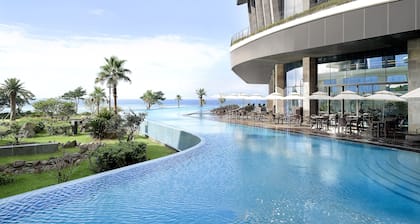Sanbangsan Mountain towers 1,295 feet (395 meters) above a spectacular beach on the southwest shoreline of Jeju Island. The result of a volcanic eruption hundreds of thousands of years ago, Sanbangsan Mountain is actually an enormous lava dome. Smoke and fire signals were once emitted from the mountain to convey warning messages to the islanders. Visit today to see spectacular coastal views and experience the sanctity of temples.
A stepped trail leads up the mountain and through verdant foliage to a venerated cave, called Sanbanggulsa Grotto. Markers located on the trail provide information about the mountain’s fauna and flora. Pause at the various lookouts to gaze down on flourishing canola fields and the Yongmeori Coast, whose shape is said to resemble a dragon. Watch as devotees ask for blessings and lay offerings at the Buddha statues inside the cave.
Return to the trailhead, where you’ll find two colorful temples. A huge golden Buddha dominates a courtyard decorated with prayer wheels and dozens of small statues at the Bomunsa Temple. Admire the bell pavilion, murals and sculptures of animals and deities at the adjacent Sanbanggulsa Temple. The café close to the temples is a great spot for cakes, coffee and teas accompanied by uninterrupted views.
Combine your visit with a walk along the Yongmeori (Dragon’s Head) Coast. Shaped over centuries by the waves eroding layers of volcanic rock, it evokes the image of a dragon dipping its head into the water. Step aboard the reconstructed ship of Dutch sailor Hendrick Hamel, who ran aground here in 1653.
Located in the Andeok-myeon district, the mountain is 14 miles (23 kilometers) west of Seogwipo city and 22 miles (35 kilometers) south of Jeju City. Free parking is available outside the entrance to the temples.
Sanbangsan Mountain is open to visitors during daylight hours. Plan about 30 minutes to reach the cave. There’s an admission fee, with discounts for children, to access both the mountain and Yongmeori Coast.














